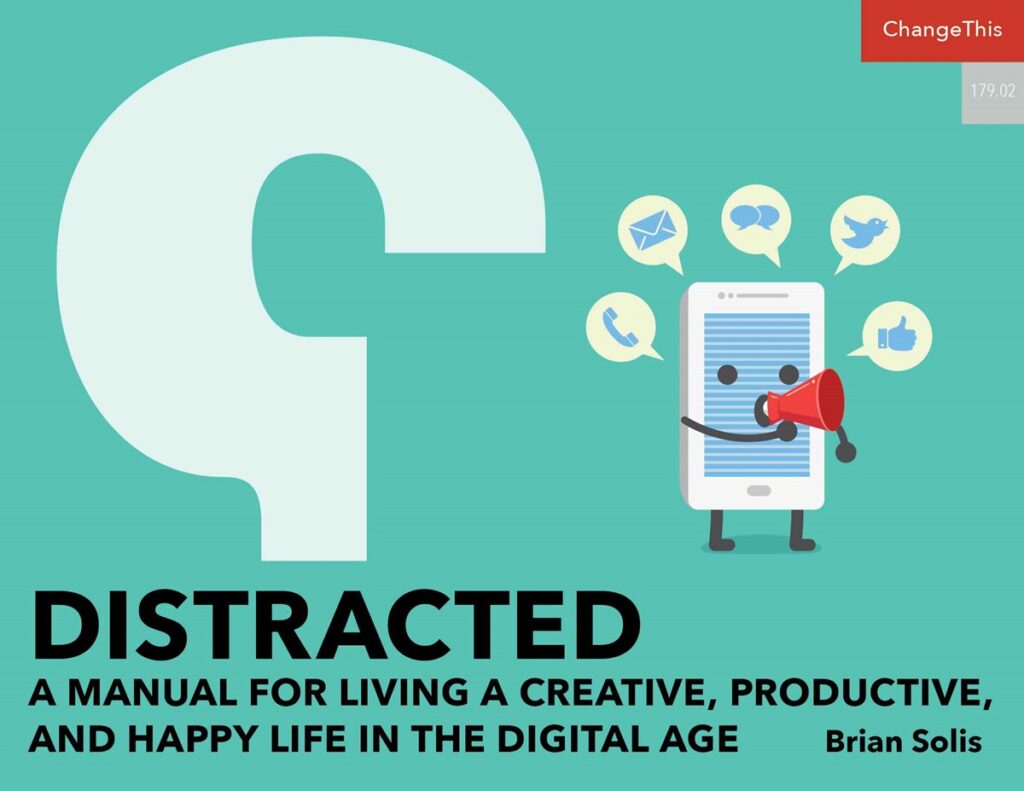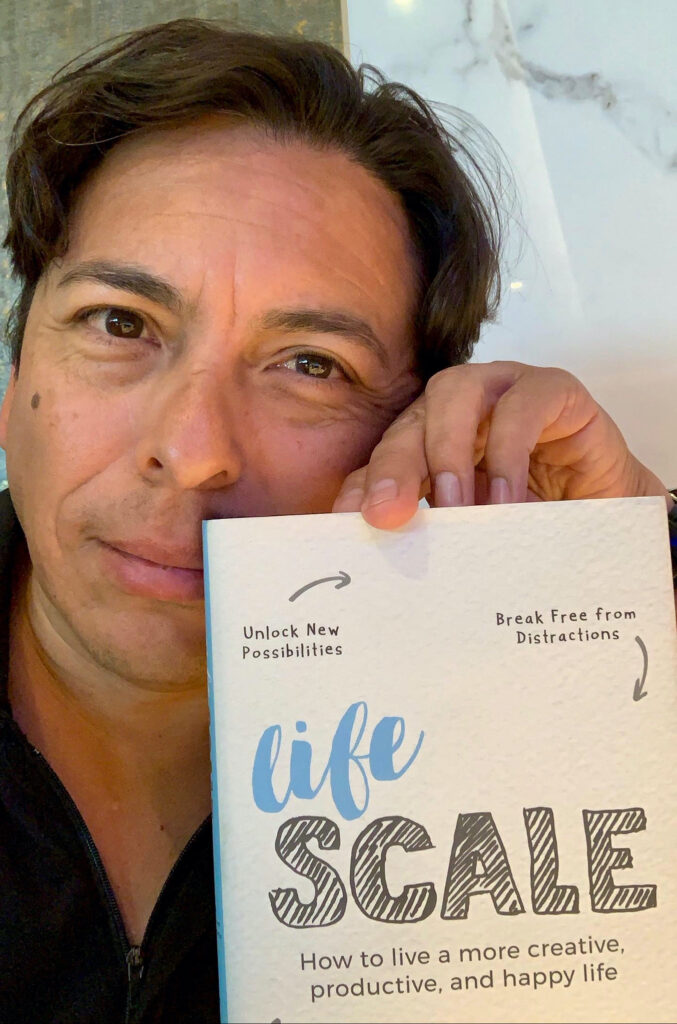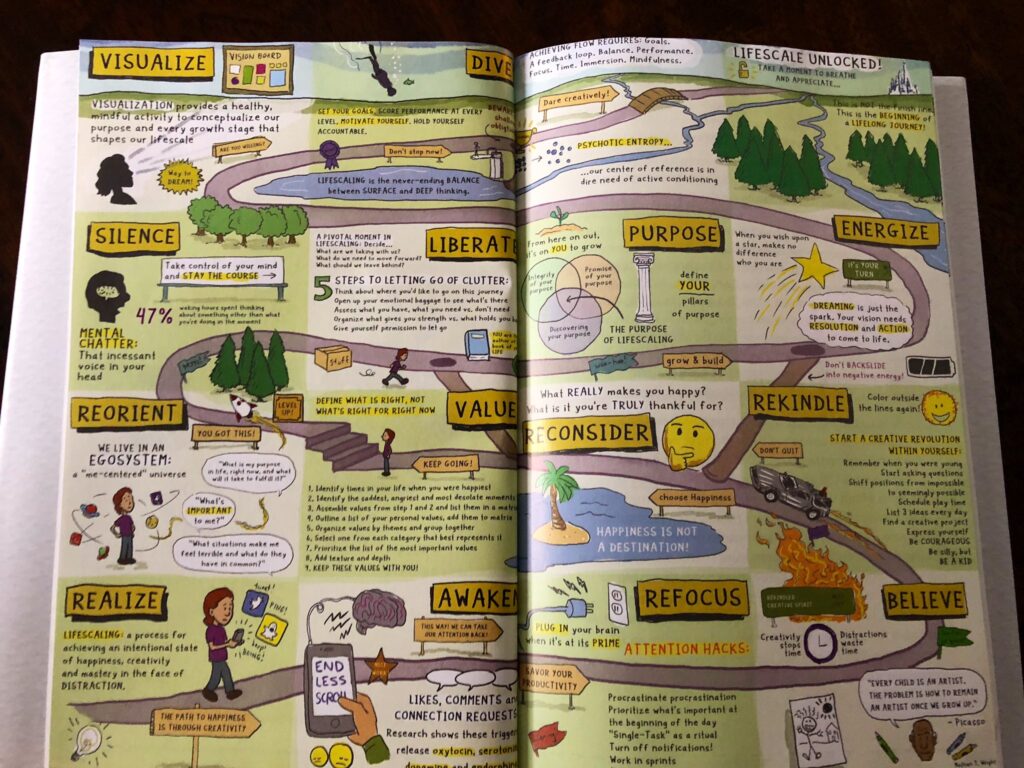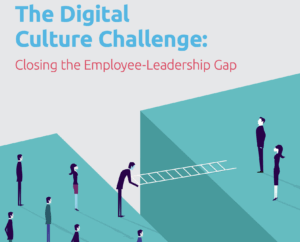Somewhere along the way, we got distracted. As much as we multitask, love our devices and feel like we’re in control, deep down we know that something is off. Shortened attention spans, declines in critical thinking, lack of sleep, self-doubt and decreased creativity are just some of the effects coming to light in an age of digital distraction.
It’s time to reclaim our lives. It’s time to take control.
We are the first generation to deal with tech overload. All of the mistakes involving our tech and our brains, families and society are happening right now. We are the guinea pigs.
When does tech become a problem? When is it too much?
It’s way past the time to rethink how we live life to develop a new blueprint for living in a world rife with distractions.
No one prepared us for this. Our parents, grandparents, teachers, mentors and even health and wellness professionals weren’t fully prepared or even aware of the effects of omnipresent distractions and connectedness. They couldn’t guide or help us as they could through other, more common experiences. The life we live today, one of constant distractions, information overload, real-time conveniences, the never-ending pursuit of validation, anxiety and stress resulting from online relationships and engagement or the lack of them, our perpetual deep dives into digital immersion is ruinous, unhealthy and also simultaneously incredible. These tumultuous times are a first for every generation.
Some of us realize it. Some of us do not. This is all just normal. Yet, somehow we lost our way.
While smartphones, social media, games, et al, offer incredibly beneficial and positive effects, few foresaw the degrees of our obsession (read: addiction) and the devastating physical, emotional and intellectual damage they also bear. Every generation is affected. Every one of us is compromised. It’s one of incredible opportunities juxtaposed with risks that no one seems to be talking (or caring) about—yet. Let’s change that.
It’s time we open our eyes, hearts and minds to what’s happening around and to us. It’s time we tame the chaos. It’s time we take control to truly live our best lives.
Believe it or not, our next steps do not begin with getting rid of our devices or apps. They start with reassessing how they fit in our lives and also how our lives should be lived in this complex but also promising time. We may be basing our decisions on dated concepts, even our definitions of happiness, standards of success and the meaning of life itself.
“It’s time we open our eyes, hearts and minds to what’s happening around and to us. It’s time we tame the chaos. It’s time we take control to truly live our best lives.”
Perhaps it’s time we throw out as many outdated concepts as possible and begin to develop a New Manual for Living in the age of relentless tech innovation and accompanying digital distraction, a guide that will rapidly evolve as our understanding and renewed outlook deepens.
Along with climate change, opioids, and shrinking the gap of racial and economic inequality, developing a sensible course of action to address the challenges around our immersion in social media, our Pavlovian response to text messages, social media notifications and email alerts, the addictive nature of gaming and other negative aspects of our tech culture is a priority that all of us need to begin addressing now.

Photo by Cristofer Jeschke on Unsplash
THE IMPACT OF DISTRACTION IS WORSE THAN WE THINK
A few statistics make it clear why the addictive nature of digital distraction and its offshoots—from multitasking to desperately short attention spans—is an unsung threat to productivity in our professional and personal lives:
- We do it constantly, but, as Life Hacker reports, results from a study from the University of California Irvine found that each time we shift from a project to check our phones, email, Twitter feed, etc., it takes more than 23 minutes to regain our focus.
- According to a report by the non-profit Overload Research Group, lost productivity due to email, social media platforms, gaming and other addictive digital distractions costs the U.S. economy about $997 billion a year, just shy of $1 trillion!
- “American adults spend more than 11 hours per day watching, reading, listening to or simply interacting with media,” according to a study by market-research group Nielsen.
- The University of Illinois has linked high engagement in mobile technology to high levels of anxiety and depression in college-age students, while a 2016 paper published by Computers in Human Behavior noted problematic smartphone use was most correlated with anxiety, need for touch and FoMO.
These statistics are eye-opening, but they’re only symptoms of a deeper problem that I don’t think is being addressed. As a society we’ve become obsessed with technology to the exclusion of family, friends, creativity, and even the productivity we think we’re chasing. We’re accomplishing many small tasks through multitasking but never carving out enough time away from digital distractions to achieve anything really meaningful.
Industry leaders are just beginning to fully understand this situation. Taewoo Kim, chief AI engineer at the machine-learning startup One Smart Lab, summarized one of our major challenges succinctly. “You can’t put your face in a device and expect to develop a long-term attention span,” he told Business Insider.
How could we? Our attention is a commodity and it’s bought and sold to the highest bidder. The more of our attention our devices and apps have, the more our attention is worth. Where does it stop? It doesn’t.
In an interview about the effects of digital distractions, one ambitious startup founder explained how we’re just getting started. “We use AI and neuroscience to increase your usage…make apps more persuasive…it’s not an accident,” he proudly stated. “It’s a conscious design decision. We’re designing minds. The biggest tech companies in the world are always trying to figure out how to juice people.”
Without awareness, self-control and resolve, we don’t stand a fighting chance…because we don’t know who’s fighting us nor the damage inflicted.
To find the balance we need goes well beyond denial, digital detox, apps like Calm and Headspace and even useful concentration and productivity techniques and lifehacks.
Learning to live a life that balances technology is going to involve a deeper process of reevaluating our values, determining what’s truly important, finding meaningful and scalable purpose and then making genuine lifestyle changes.
Thought-leaders need to begin speaking out about this trend and more in-depth research needs to be done to better understand the problem. Better living through technology is possible, if we know how and when to power down.
“Taking a historic perspective, digital distraction is fast becoming another ineffective norm that most of us simply just accept.”
LETTING GO OF OUTDATED MODELS TO MOVE AHEAD
Taking a historic perspective, digital distraction is fast becoming another ineffective norm that most of us simply just accept.
Go to school. Go to university. Excel. Get a good job. Get married. Have kids. Buy stuff that demonstrates success. Buy stuff that makes you happy for now.
But what happens when you have that great job you worked so hard to get? Employee morale after all is at an all-time low. According to GALLUP, 85% of employees are either not engaged or actively disengaged at work. This global “norm” costs approximately $7 trillion in lost productivity.
We may grumble about longer hours, lower productivity, poor job performance and time missed with family, but most of us don’t really analyze the situation until we hit a low point. (I did, and I’ll talk about that later.)
Throughout the 20th Century daily routines for work and school—the ones most of us still follow today—evolved for a number of pragmatic and compassionate reasons.
Thanks to the efforts of unions, social activists and progressive leaders advocating for a more civilized existence for everyone, the work week for industrial workers (and eventually desk jockeys) gradually shrank from six-day/12-14+ hour schedules to the more manageable 9:00 to 5:00 that, decades later, we still think of as “normal.” A huge improvement, but one that no longer makes sense for large portions of the workforce.
8:00 AM to 2:30 PM with summers off—our standard K-12 schedule—was a compromise developed in the days before air conditioning and one in which rural families were dependent on children for labor, especially during planting and harvest seasons. Urban schools were closed when classrooms would be unbearably hot, country classes canceled when kids and teens were most needed on the farm. Added to the mix, singleincome families were the norm, with mothers home in the afternoons and summers.
As Katherine Goffeney writes in Quartz Daily, “The modern workday is an invention of nineteenth century socialism … If you grew up, as I did, in the suburbs of Detroit, you might have believed that Henry Ford invented the 9-to-5 workday, but he didn’t. True, he was influential in its mass acceptance, but the real inventors and champions of the 8-hour workday were the American labor unions of the 1800s.”
Goffeney continues by asking “So why do we still accept the 9-to-5? First of all, it’s now 8-to-5…The short answer to why we still accept it, is because we’re socialized to (emphasis mine). We’ve become so used to seeing people hating Mondays, living for Fridays, and despising early mornings that it has all become normal. We expect a standard work schedule to be a hassle, and so when it is, we think nothing of it.”
She’s nailed our situation. We’re socialized to it. Workdays, school days and now, 24/7 connection to social media and answering emails from our employers at midnight— we grumble, but it’s become our normal. So we don’t really do anything about it from fear of looking slack, falling behind or just being different.
For most, these engrained social models don’t work anymore, but they’re the ones we’re expected to follow. It’s time (overtime, really) for a rethink.
So, even before technology escalated to its current state, as a society we were structuring our lives around outmoded schedules. The standards of how we lived our lives three or four generations ago are outmoded. Just talk to two-income families about the logistics and expense of after school childcare. What worked in 1950s America doesn’t work today, even though that’s the model we still follow. The flexibility offered by technology just makes these norms seem more outmoded.
“For most, these engrained social models don’t work anymore, but they’re the ones we’re expected to follow. It’s time (overtime, really) for a rethink.”
TIME FOR SOCIETY TO INTERVENE?
“Whenever a new technology is introduced into society, there must be a counterbalancing human response…We must learn to balance the material wonders of technology with the spiritual demands of our human nature.” —John Naisbitt
The industrial revolution improved life in many ways in the 19th and 20th centuries, but left unchecked, industrialists subjected men, women and children to endless days of hard labor before society analyzed the situation and stepped in.
Fast forward to now. For the past few decades tech advancements have been improving our quality of life, offering almost unlimited possibilities to help us optimize our productivity, creativity and joy, but tech’s also overstepping its boundaries. It’s time to step back, take a hard look at digital distraction and our over-the-top tech use and then shift our expectations around how we use technology and how its (increasingly) uses us.
Today, with so much work linked to the Cloud, many of us can pop our laptops in a shoulder bag and work anywhere (a good thing) and at any time (sometimes a good thing). The downside of this is the expectation that we’ll be available 24/7 on our mobile devices and continue working well past an 8-hour day, whenever that day begins.
FINDING MY OWN SOLUTIONS IN THE ABSENCE OF REAL HELP
I’m old enough to remember the days of analog life, but I work in Silicon Valley, have built a reputation as a digital anthropologist and futurist and live a life that transitions between an office, working remotely in the same time zone and frequent travel that finds me working in hotels and airports.
It’s a life rooted in the power of technology, one that gives me the freedom and power to work anywhere at almost any time. In many ways it’s an ideal situation, as long as I remain focused when I need to accomplish deep work and power-down to make time for family, friends and creative pursuits.
Like so many people, however, I lost the thread. Focus became a rarity, digital distraction and burnout the norm. I wrote my latest and most difficult book, Lifescale: How to Live a More Creative, Productive and Happy Life, because I was working through problems of all of this…overwork, underachievement, burnout and perpetual digital distraction. I didn’t feel like I was living up to my own capabilities or the picture-perfect lives of everyone I follow online. After studying the impact of digital distraction for two decades, I’d fallen prey to it myself.
Focusing on deep work and being present for the people in my life had all become a major challenge. And the solutions I looked for weren’t there, just superficial hacks and recommendations like meditation and relaxation apps that, although somewhat useful, never got to the root of the cause.
So I began to develop my own solutions—to my problems and to those of so many people I saw struggling with the same issues. I’ve explored practices like persuasive design that got us addicted to our phones and then offer workable solutions to our digital distraction and disconnectedness from satisfying work, fun, play, creativity and deep personal relationships.
“This isn’t just about fixing and improving our own lives, but also the lives of those we touch.”
It’s a challenging and sometimes painful process I’ve been going through over the past few years. Struggling to write a follow up X: The Experience When Business Meets Design, I couldn’t focus for more than a few minutes at a time and was so mired in digital distractions that I had to do a reset, push my book proposal aside and start focusing on my very real problem of digital distraction.
I used my well-developed research skills, but instead of coming up with solid solutions, all I uncovered were superficial fixes and hacks. Good, but not nearly good enough. So I began doing the work on myself that eventually became my eighth book (light years away from my original project)—Lifescale. It takes readers through my journey of recovery, but, far more important, adapts the lessons I’ve learned into step-by-step exercises to help us regain the capacity to focus, to create, to dream big and feel joy in our lives again.
It’s not a fast, easy fix, but it’s one I believe digs deeper and asks more challenging questions than anything else I found when I started googling “digital distraction” two years ago.
It was a journey for me and one that I hope other distracted people will join, one of not only rediscovering how to focus and do our best work, but also how to reconnect with people and the physical world beyond our phones. For me, I found that regaining focus meant defining my values, learning that I didn’t need to chase every shiny object (from inconsequential side projects to click-bait headlines that pop up in my feed) and really home in on work, experiences and people that matter to me over the long-term.
THE WORK IS JUST BEGINNING
“As I went around the world speaking about my experience, I saw two things: First, that we’re facing a stress and burnout epidemic. And second, that people deeply want to change the way they work and live…” —Ariana Huffington
I’m extremely proud of Lifescale, but I realize the work I’ve done on the topic of containing the digital distraction in our lives is only a start. Lifescale the book is just the beginning of a journey toward consistently breaking free from distractions and reconnecting with creativity. It’s a foundation that I’m working to turn into a movement, one I hope many people will benefit from. It’s also one more thought leaders need to join.
From Silicon Valley to academia to anyone who cares, we need the best minds of our generation exploring this issue.
What we also need is a manual for living a modern lifestyle, one that sheds dated concepts and shares what it’s like to be mindful, aware, analytical and creative, what getting back to the best parts of an analog life combined with new digital capabilities looks like.
This isn’t just about fixing and improving our own lives, but also the lives of those we touch.
Those of us old enough to remember life before smartphone immersion owe it to ourselves and the generations that know nothing else to rediscover the joys of doing nothing or reading actual books, playing real world games, drawing with brushes, paint and paper, and allowing ourselves to develop our creativity through silence and actual boredom.
Then there are those who don’t know the splendor and benefits of any of this. A hybrid, innovative mindset, vision, and approach is needed.
Tech isn’t going anywhere. But tech doesn’t have to be the only “leader” to push forward. Leadership is also where we help society and guide people of all generations toward their true best lives to also inspire others to do the same. This is only beginning.
I’ll end with an edited quote from author/satirist David Wong. “New technology is not good or evil in and of itself. [Once you know what you didn’t know or see what you didn’t see before] It’s all about how people choose to use it.”
Originally published on Porchlight

Brian Solis | Author, Keynote Speaker, Futurist
Brian Solis is world-renowned digital analyst, anthropologist and futurist. He is also a sought-after keynote speaker and an 8x best-selling author. In his new book, Lifescale: How to live a more creative, productive and happy life, Brian tackles the struggles of living in a world rife with constant digital distractions. His previous books, X: The Experience When Business Meets Design and What’s the Future of Business explore the future of customer and user experience design and modernizing customer engagement in the four moments of truth.
Invite him to speak at your next event or bring him in to your organization to inspire colleagues, executives and boards of directors.










Leave a Reply